Isle of Man 'shame' over Summerland fire disaster
- Published
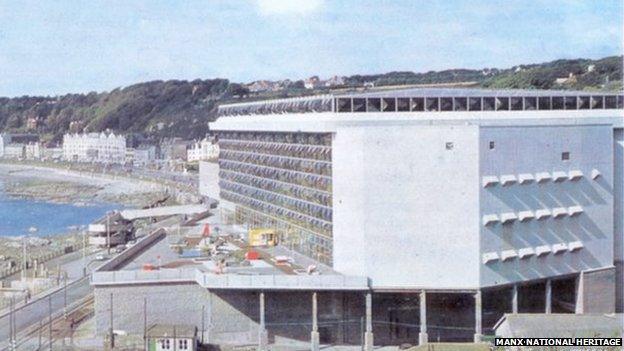
The original 3.5-acre Summerland resort, billed as the biggest and most innovative indoor entertainment centre in the world, was described by the British Tourist Authority as "an outstanding tourist enterprise"
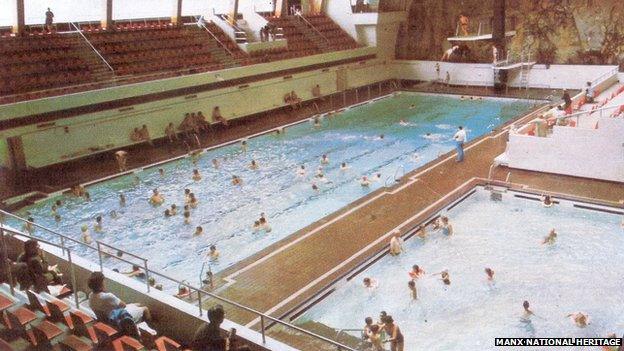
The centre boasted an indoor heated swimming pool, saunas, Turkish baths, an artificial sunshine zone, a children's theatre, an underground disco, cascading waterfalls along with restaurants and bars
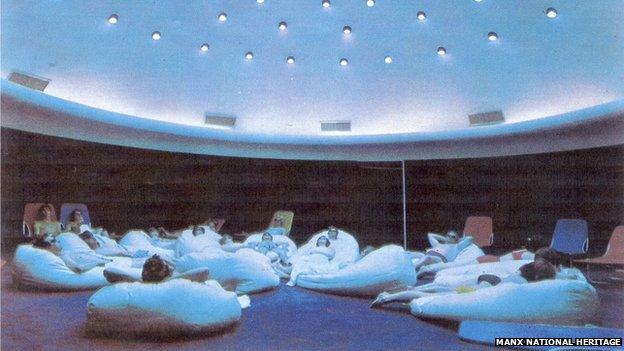
The aim of the design was to create an artificial centre of sunshine, which had to be spectacular enough to compete with the growing threat of cheap foreign holidays
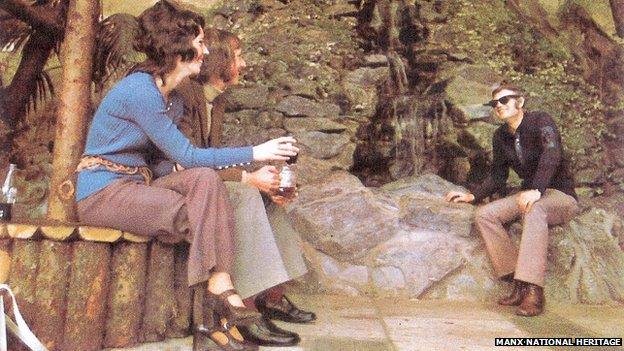
The architect, James Phillips Lomas, wanted to create the illusion of being outside and planned exposed cliff faces with tropical plants while allowing wild birds to live and fly throughout the building
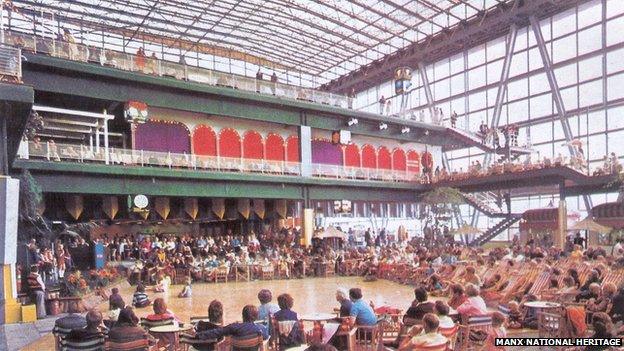
The transparent roof was made with 6ft (2m) acrylic bronze-tinted sheets so that the natural light filtering through would appear like golden rays

On the evening of Thursday 2 August 1973, about 3,000 people were at the resort when a fire, described as the worst in Britain since the Blitz, ripped through the building, killing 50 people
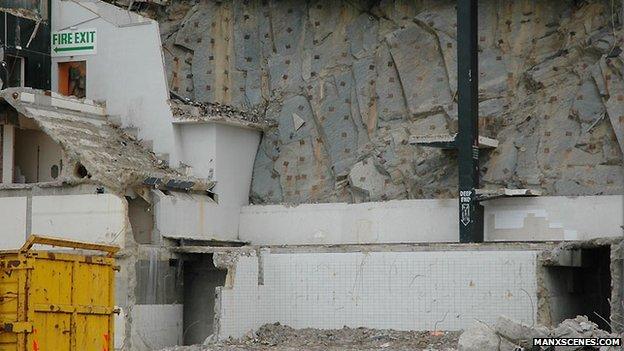
A smaller-scale Summerland building was rebuilt three years after the fire, but in 2005 the entire site was finally demolished by the government - since then no decision has been made over the future of the site
Forty years after the Summerland fire, a sense of collective shame still exists on the Isle of Man, according to a local campaigner.
Tina Brennan from Douglas remembers watching in horror from the cliff-top as the leisure complex burnt to the ground, killing 50 people - mainly holidaymakers.
"As a Manxwoman, I feel ashamed about the catalogue of errors which led to the death of so many."
The indoor Summerland leisure complex in Douglas was the first of its kind in the world and its facilities put the Isle of Man on the map as one of the most important tourist destinations in the British Isles.
Two years after its completion in 1971, the hi-tech promenade venue was the scene of devastation - the blaze, sparked by three boys illicitly smoking, gutted the complex within minutes.
A public inquiry into the fire, published in 1974, found there were "no villains" - just human beings who made mistakes.
"We let those people down [the fire victims] very badly," continued Mrs Brennan.
"I believe there has been a conscious decision to keep quiet about Summerland - we should bring our schoolchildren down here to learn about what happened.
"But we don't do anything like that, it's just been shoved to the background - I think that is because there is a feeling of shame among the island's older generation."
Mrs Brennan is now calling for a garden to be created on the site of what she describes as a "shocking and shameful event in Manx history".
Terry Cringle, who was a freelance journalist working on the Isle of Man in 1973, said the fire left a "deep scar on the island's national conscience".
"The media coverage from outside of the island soon fastened on to the fact that Summerland could never have been built under the planning laws in the United Kingdom - the hint being that everyone wanted this project so much that a few corners were cut," he said.
"People remembered this criticism and we all took it on board and for years any references on television showing the burning building caused terrible distress.
"The wounds still haven't healed but they are getting easier."
New memorial
In his report into the fire, Dr Ian Phillips from the University of Birmingham said the significance of the disaster was grossly misunderstood.
He added: "Despite the large-scale loss of life in the Isle of Man fire, the Summerland disaster is one of the most forgotten and trivialised news stories in the post-war history of the British Isles.
"For instance, fewer than 50% of books that claim to list major news stories involving Britons mention the Summerland disaster, yet the authors of these books can all find space to mention the deaths of 31 Britons in the King's Cross fire in London."
In his paper, Dr Philips refers to a letter, written to the Isle of Man Courier in 1975 by Onchan resident Peter Arlington, as an example of an attitude that prevailed in the island for decades.
Mr Arlington wrote: "We want to get as far away from Summerland as we can. The tragedy will never be forgotten so long as we still hanker after 'another Summerland'… all I want to see is the place cleared."
For years, the only recognition of the Summerland fire has been a small stone plaque on the site put in place on the 25th anniversary of the tragedy.
Later, Douglas Council will unveil a new granite memorial inscribed with the names of all the victims before a memorial service is held.
It will be the first time in 40 years the island has remembered individually the men, women and children who came to the Isle of Man for a summer holiday and never went home.
- Published2 August 2013
- Published2 August 2013
- Published4 May 2013
- Published2 August 2013